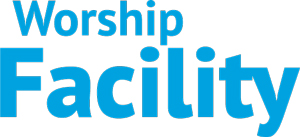This summer, I got the opportunity to design and and operate the lighting for STRYPERS New Acoustic Tour as it came through New York State. Advancing a lighting plot for a band like STRYPER involves several key steps to ensure the lighting design meets their requirements and enhances their performance. Let’s discuss how that whole process started and how it lit up the stars!

Initial Communication
First we have to reach out to the band’s production manager or lighting director to gather initial requirements and preferences. Then we have to obtain the band’s Technical Rider. This document often includes specific technical requirements, including lighting needs.
Gather Information
Each venue is different so we need to contact each one and obtain the venue’s specifications. These include detailed information about the venue, including stage dimensions, rigging points, power availability, and any existing lighting infrastructure.
We need to understand the band’s setlist and the flow of the show to plan lighting transitions and effects. So, communication with the production manager is extremely important.
Design the Lighting Plot
Now we need to create a Rough Draft. Using the information gathered, draft a preliminary lighting plot. This includes fixture types, positions, and purposes (e.g., washes, spots, effects). Having Software Tools makes things easier for everyone involved, Use lighting design software like WYSIWYG, Vectorworks, or Capture to create a visual representation of the lighting design.
Collaboration and Approval
Now we need to review with the band’s team by sharing the preliminary design with the band’s lighting director for feedback and adjustments. In the process we may need to make revisions or adjust the lighting plot based on feedback to ensure it aligns with the band’s vision and technical needs.
Technical Preparation
Next we confirm our Fixture List and check the equipment. Ensure all required fixtures and equipment are available and in working condition. This includes checking for any special effects or unique lighting elements requested by the band.
Then we create our Patch List and set DMX Addresses. Prepare a detailed patch list, assigning DMX addresses to each fixture.
On-Site Setup and Adjustments
Coordinate with the venue’s technical team to load in and rig the lighting equipment according to the plot. Focus the lights and program the lighting cues, scenes, and transitions. This step involves fine-tuning the design to fit the actual stage and space.
Conduct rehearsals with the band to test the lighting design and make any necessary adjustments. Run through the show cue-to-cue to ensure all lighting transitions and effects are correctly timed with the performance.
Show Execution
During the show, follow the pre-programmed cues while being prepared to make live adjustments as needed to accommodate any changes or unforeseen issues.
Maintain open and clear communication with the band’s production team and the venue’s technical staff. Be prepared to adapt to changes and unexpected challenges. Pay close attention to the band’s preferences and the overall aesthetic they wish to achieve with the lighting.

